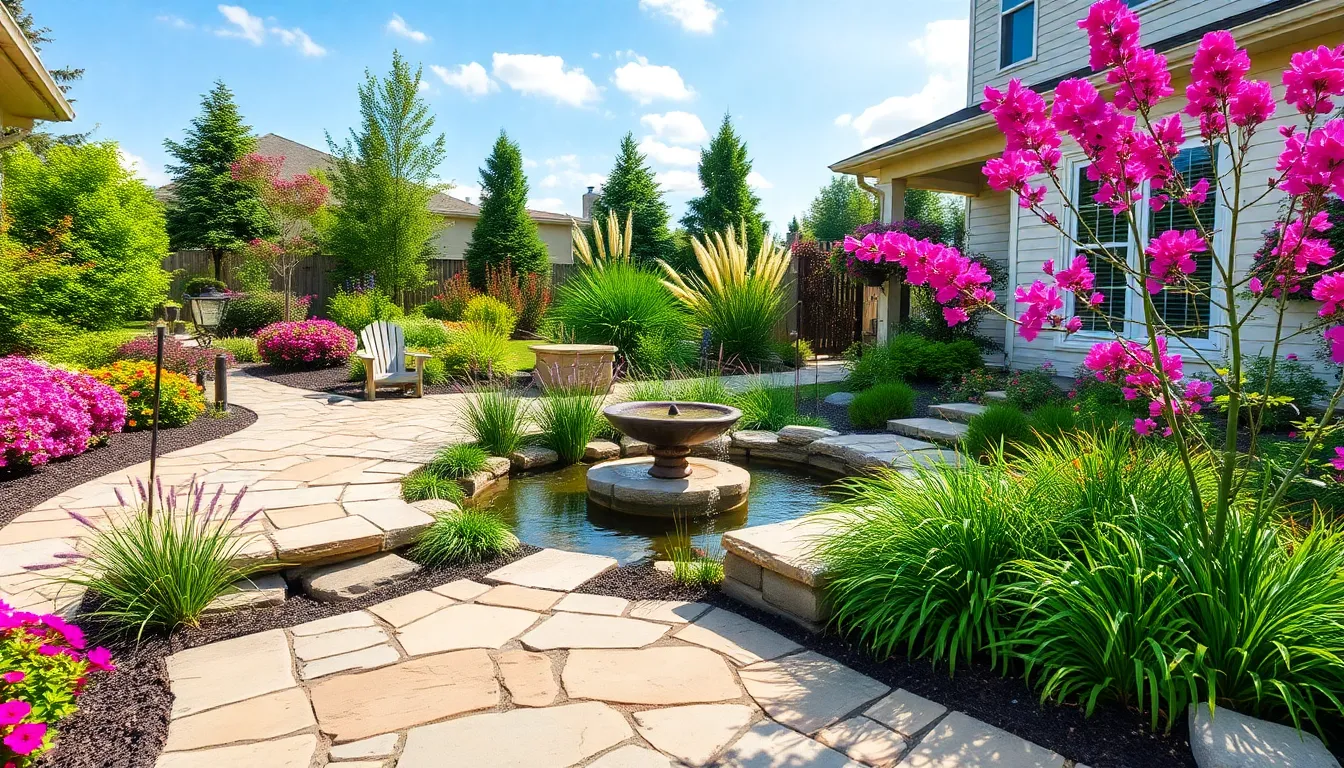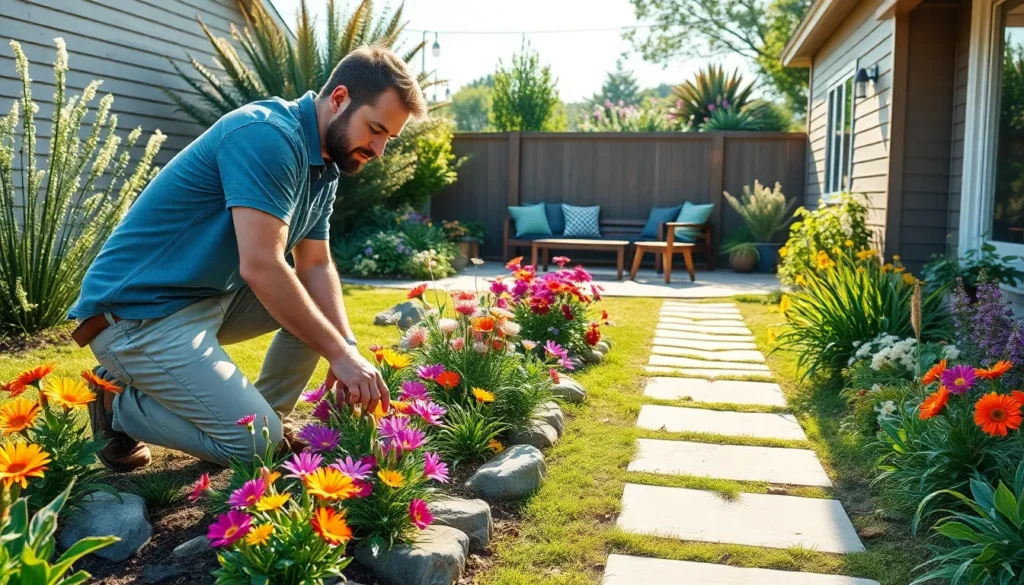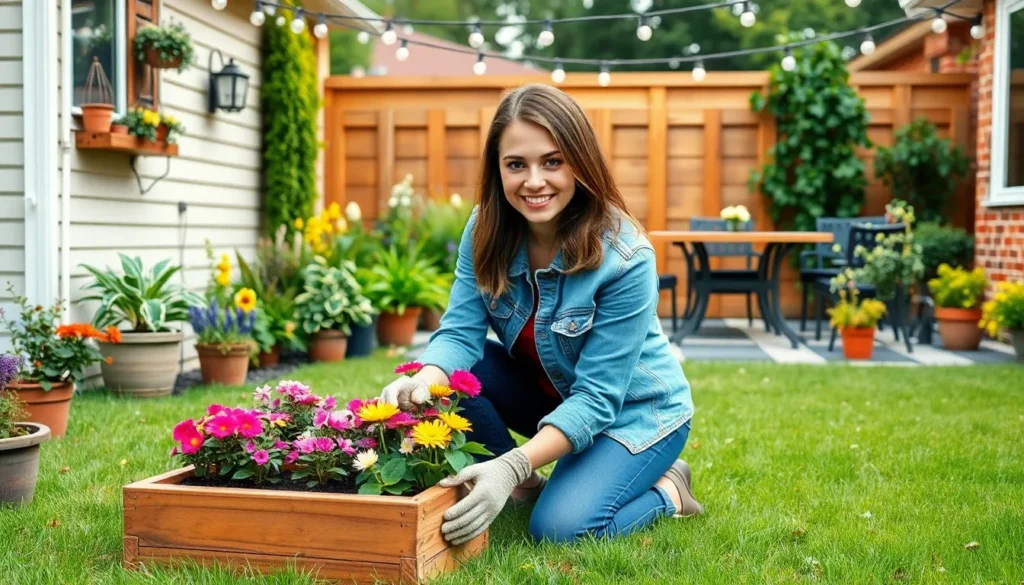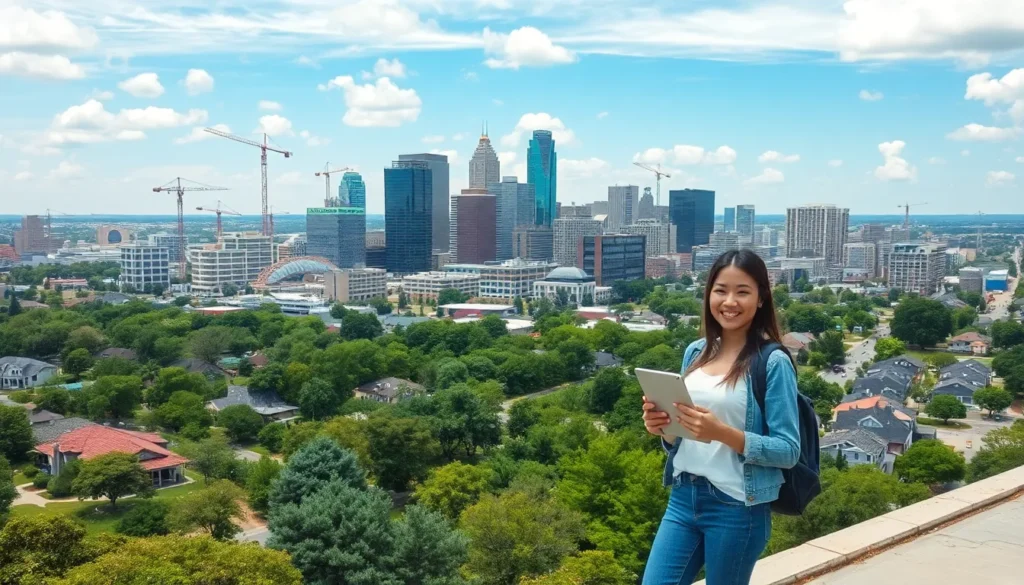Transforming a backyard into a stunning oasis isn’t just for the pros on TV. With a little creativity and some elbow grease, anyone can turn their outdoor space into a personal paradise. Whether it’s a cozy nook for sipping coffee or a vibrant garden that rivals the local botanical gardens, the right landscaping design can make all the difference.
Table of Contents
TogglePopular Backyard Landscaping Designs
Innovative landscaping designs enhance outdoor spaces. Various styles cater to different tastes and preferences.
Contemporary Designs
Contemporary designs emphasize clean lines and simplicity. They often incorporate materials like stone, wood, and metal. Open spaces are vital, allowing for seamless integration between nature and living areas. Minimalistic gardens frequently feature geometric shapes and well-manicured plants. Water features like fountains or ponds contribute tranquility. Outdoor furniture made of sleek materials adds comfort without cluttering the space. Lighting, placed strategically, enhances the atmosphere during evening gatherings.
Rustic Designs
Rustic designs evoke a natural, charming feel. They utilize organic materials such as reclaimed wood, natural stone, and native plants. Paths lined with gravel or uneven stones create an inviting invitation to explore the backyard. Flower beds filled with wildflowers add vibrant color and attract pollinators. Decorative elements like vintage garden tools or wooden barrels serve as unique accents. Fire pits become central gathering spots for family and friends, offering warmth and ambiance during cooler nights. Garden furniture made of weathered wood complements the overall aesthetic.
Key Elements of Effective Landscaping

Creating an engaging backyard involves key elements that enhance both aesthetics and functionality. Effective landscaping combines hardscaping features and plant selection to create a balanced outdoor environment.
Hardscaping Features
Hardscaping provides structure to the landscape. Elements such as patios, walkways, retaining walls, and fences offer visual appeal while defining spaces. Incorporating these features with natural stone, brick, or concrete can create pathways that guide movement. Integrating outdoor seating areas encourages relaxation and social gatherings. Water elements, like fountains or ponds, add an enchanting touch that improves ambiance. Ultimately, the right hardscaping elements contribute to the overall harmony of the backyard.
Plant Selection
Plant selection is crucial for landscaping success. Choose native plants to ensure better adaptability and lower maintenance. Incorporating a variety of flowering shrubs, ornamental grasses, and perennials creates depth and visual interest. Selecting plants based on their blooming seasons ensures year-round color and activity in the garden. Additionally, consider layering plants with taller species in the back and shorter ones in the front to enhance visibility. The proper choice of plants transforms the landscape into a vibrant ecosystem that attracts wildlife and enhances outdoor enjoyment.
Tips for Planning Your Backyard Layout
Planning a backyard layout involves thoughtful consideration of various factors. Start with a clear assessment of available space to determine how to maximize its potential.
Assessing Your Space
Evaluate the dimensions of your backyard. Identify areas with sunlight and shade to understand plant placement effectively. Examine existing features like trees, fences, or structures since they influence design choices. Consider accessibility to ensure pathways allow for easy movement around the area. Ensure to account for drainage and wind patterns, as these can affect plant health and comfort levels in specific zones.
Defining Your Style
Decide on a landscaping style that resonates with personal taste. Examine the aesthetics of contemporary or rustic designs to see which aligns best with preferences. Incorporate elements that create a cohesive look, such as materials and colors that complement the home. Explore options for seating areas, flower beds, or water features to enhance comfort and attraction. When choosing plants, select varieties that mirror the chosen style while thriving in the local climate.
Sustainability in Backyard Landscaping
Sustainable backyard landscaping practices promote environmental health while creating beautiful outdoor spaces. Utilizing native plants and water-efficient designs enhances sustainability and supports local ecosystems.
Native Plants
Native plants play a crucial role in sustainable landscaping. They adapt well to local climates, require less water, and attract beneficial wildlife like pollinators and birds. Selecting local flora helps reduce maintenance efforts and eliminates the need for chemical fertilizers. For example, wildflowers and native shrubs enhance biodiversity, enriching the landscape with seasonal colors and textures. Homeowners can create vibrant gardens while minimizing their environmental footprint by prioritizing native species.
Water-Efficient Designs
Implementing water-efficient designs significantly conserves resources. Landscape features such as xeriscaping incorporate drought-resistant plants and efficient irrigation systems to reduce water usage. Rainwater harvesting systems capture and store precipitation for later use, promoting sustainability. Additionally, installing permeable paving reduces surface runoff and encourages groundwater recharge. Gardeners can design low-maintenance, visually appealing environments by adopting these practices, creating an outdoor space that thrives even in arid conditions.
Transforming a backyard into a stunning oasis is within reach for anyone willing to put in the effort. By combining creativity with practical landscaping techniques, it’s possible to create a space that not only looks great but also functions well for outdoor gatherings.
Whether opting for a contemporary or rustic design, the key lies in thoughtful planning and execution. Incorporating hardscaping features and selecting the right plants can enhance both beauty and sustainability.
Ultimately, a well-designed backyard not only elevates property value but also fosters a deeper connection with nature, encouraging relaxation and enjoyment year-round. Embracing these landscaping principles allows homeowners to craft their ideal outdoor retreat.













